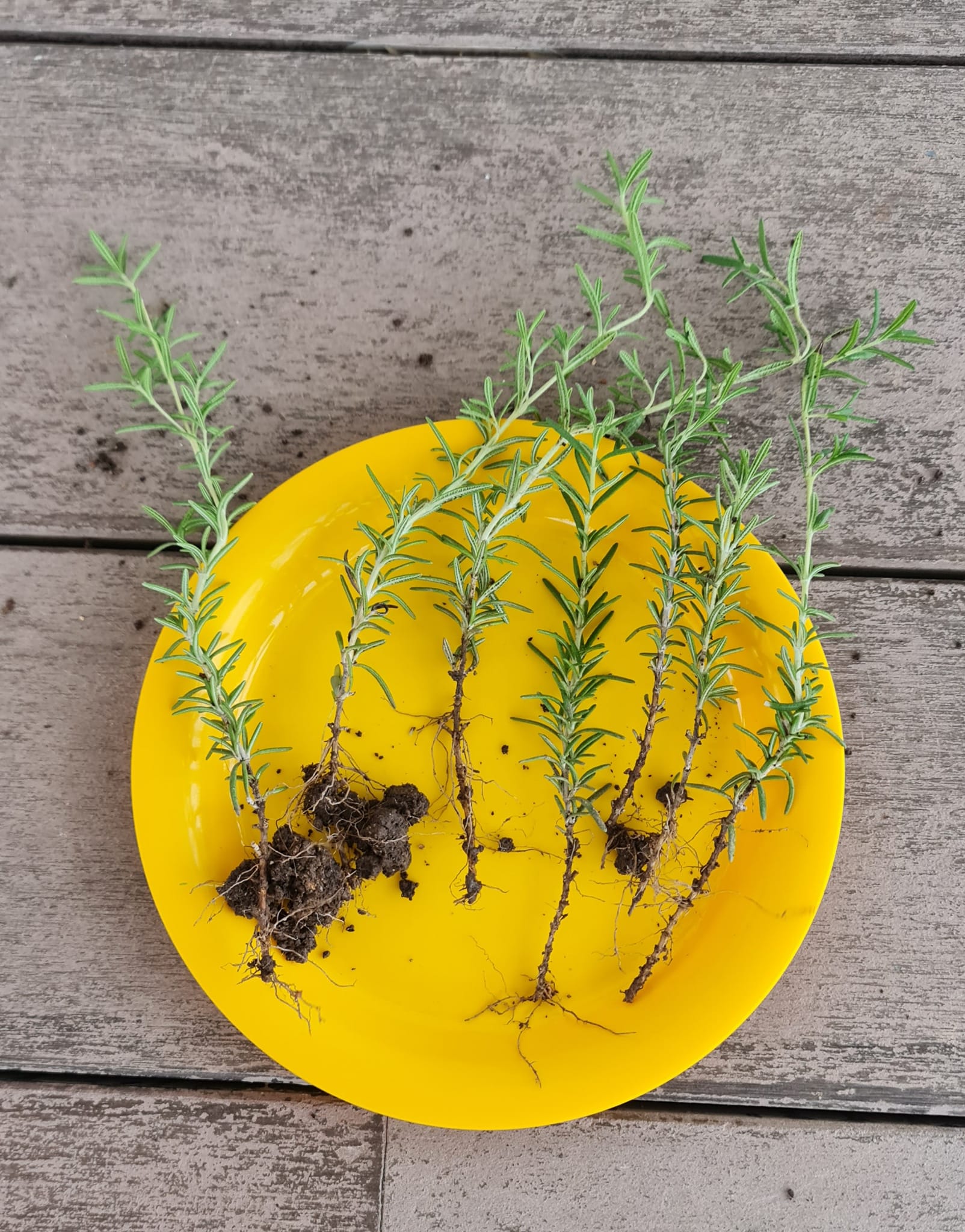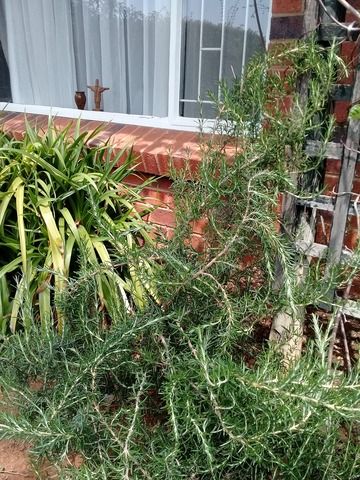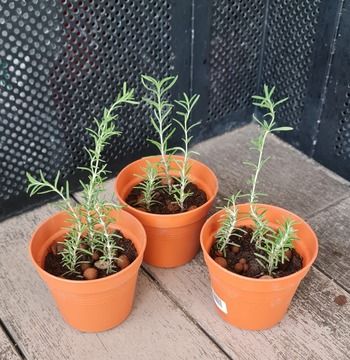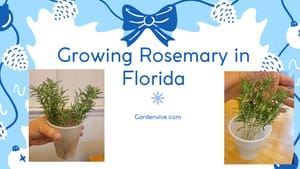
We all know and heard about Rosemary but what's creeping rosemary?
Creeping Rosemary falls under the Rosmarinus genus and is also known as prostrate rosemary (Rosmarinus officinalis 'Prostratus'). It is a low-growing and spreading variety of the common rosemary herb. Unlike the traditional upright rosemary plant, creeping rosemary has a prostrate or trailing growth habit.
Creeping rosemary can be used for soil retention on slopes. I love using this as a bordering plant of my pathways.
Here are some basic characteristics and information about creeping rosemary:
Creeping Rosemary Information
| Growth Habit: | Trailing, spreading |
|---|---|
| Leaves: | Narrow, needle-like, aromatic |
| Flowers: | Mostly Pale blue to lavender-blue |
| Culinary Uses: | Popular in Mediterranean cuisine |
| Sun and Soil Requirements: | Full sun, well-draining soil |
| Growing Conditions: | Ground cover, rock gardens, containers |
| Maintenance: | Low-maintenance, regular pruning |
| Hardiness: | USDA zones 8 and above |
| Medicinal and Aromatic Uses: | Used in aromatherapy |
I love this rosemary for the following reasons:
- It's good for ground covering.
- Medical use.
- Flowers are attractive to bees.
- Good for wall covering as well as fences.
Differences between normal Rosemary and Creeping rosemary
If you are wondering how you can identify creeping rosemary (trailing rosemary) or differentiate between creeping rosemary and Rosmarinus Officinalis, then look at the following characteristics:
- Growing: Normal Rosemary typically grows as an upright, bushy shrub that can reach a height of 3 to 5 feet (0.9 to 1.5 meters). It has a more vertical growth pattern, with woody stems. But Creeping Rosemary tends to creep along the ground, forming a dense mat of foliage. The stems of creeping rosemary are more flexible and tend to trail or spread along the ground.
- Leaves: Both normal rosemary and creeping rosemary have similar needle-like, aromatic leaves, but the leaves of creeping rosemary are usually smaller and more delicate.
Growing Tips for Creeping Rosemary
You can grow creeping rosemary indoors and outdoors as well. But I personally love it growing outdoors.
It can be elegantly trained to drape over fences, adorn rockeries, or embellish raised beds. Over time, it transforms into an appealing groundcover, boasting delicate, leathery leaves and delightful flowers. You can plant it with other drought-tolerant plants. I love the fragrance of its foliage.
Sunlight
Creeping rosemary, like most rosemary varieties, thrives in full sun. If you're growing it indoors, place it near a bright, sunny window. 6-8 hours of sunlight is ideal for this plant.
Soil
Use well-draining soil for your creeping rosemary. Make sure the soil has good drainage capability.
Watering Creeping Rosemary
Once this plant is established it can tolerate drought. Sparingly watering is good and make sure you water it deeply. As this is going to cover the bed, spray water on the leaves well. It will make the ground wet as well if you water deeply.
Pruning
The specialty of creeping rosemary is its speedy growth rate. So do not prune unless you feel to do so. Pruning will not harm this plant. If you wish to reduce the size of your creeping rosemary, you can prune 30% of its vines.
Training
If you want to train your creeping rosemary then the best idea is to use fences. But it can use walls or grounds to spread widely.
Take a look at this:

Propagation of Creeping rosemary
You can grow creeping rosemary from stem cuttings as well as from seeds. But if you have creeping rosemary with you or by any chance have this plant near you, stem cuttings will be the best option for propagating.
Stem cuttings
Choose a healthy and non-flowering stem of your creeping rosemary and cut it. Make sure that there are leaves available in the cutting. 4-5 inches cutting will be ideal for this. You can directly plant the cuttings into the soil. Within a week it will be established.
From seeds
I don't prefer seed propagation for creeping rosemary as it will take a lot more time to grow.
Still, if you wish to propagate from seeds, then sow the seeds on your prepared soil and give water spray on it carefully. Keep spraying water once a day and you can see the sprouts within a week.
Some Frequently Asked Questions on Creeping Rosemary
Here are the questions and their answers:
Can we eat creeping rosemary?
Yes, it is edible and known for its herb qualities. You can chop it and eat it with salads, pasta etc.
Is it deer-tolerant?
Yes, creeping rosemary is deer-tolerant. It is also rabbit-tolerant.
Is creeping rosemary a perennial?
Yes, it's a perennial plant.
Can we plant it in a pot?
Yes, we can plant creeping rosemary in a pot and it will make your space beautiful with its hanging green leaves.


